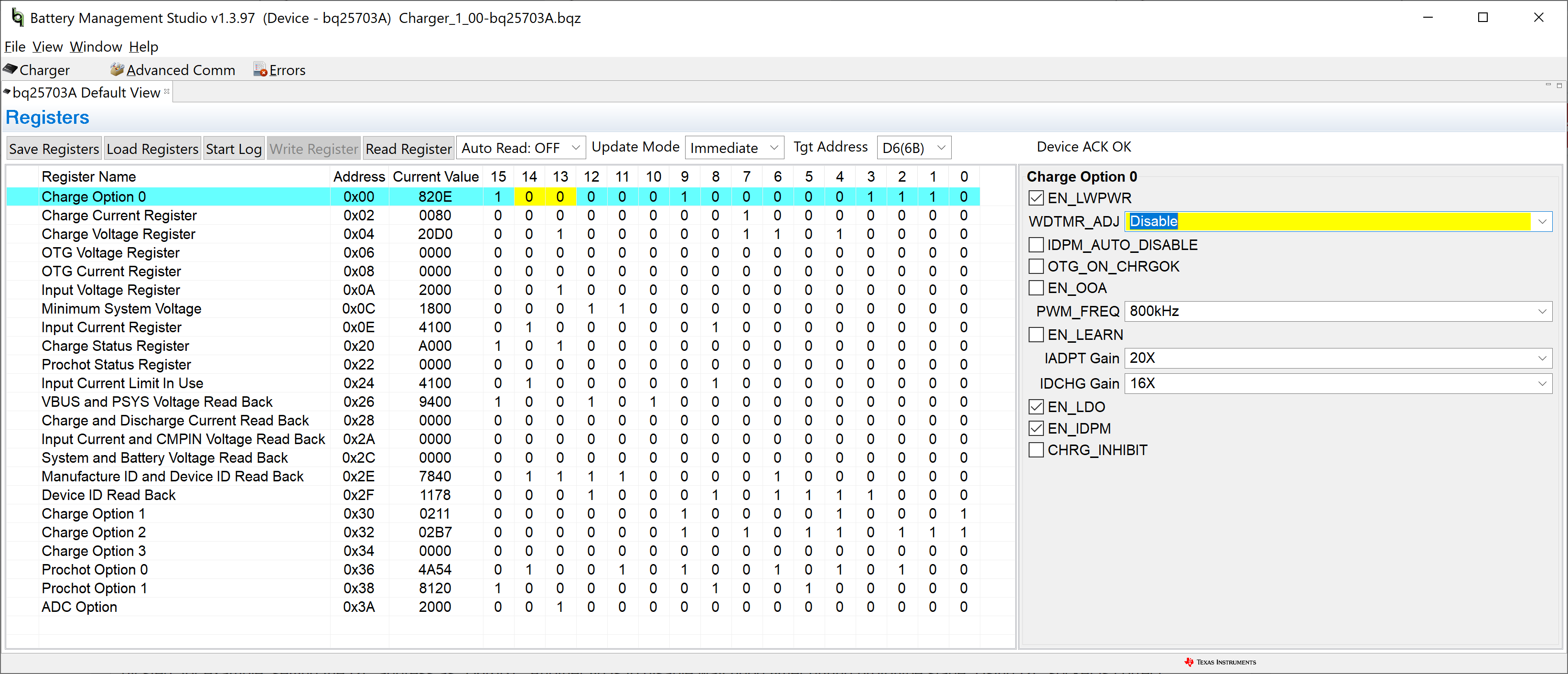Other Parts Discussed in Thread: BQSTUDIO, , , BQ25703, EV2400
I have the BQ25703AEVM-732 connected up and running with BQSTUDIO.
- Forum post "BQ25703A: battery bq25703a" states "The device pre-configurations assume lithium-ion cells and sets them for a charge voltage of 4.2V per cell."
- Forum post "BQ25703A: we need demo register configuration list" points back to the datasheet for register values.
- The datasheet states "multi-chemistry" but says nothing about the register changes necessary to accommodate such.
Is there a default configuration? The datasheet says nothing about it.
Do I have to become an expert at the various voltages, currents, times, and temperatures, for properly and safely charging a 2S Li-Ion battery stack? Or does TI have a set of configuration values for basic Li-Ion charging? Surely this must exist.
Thanks.
Jon
"


